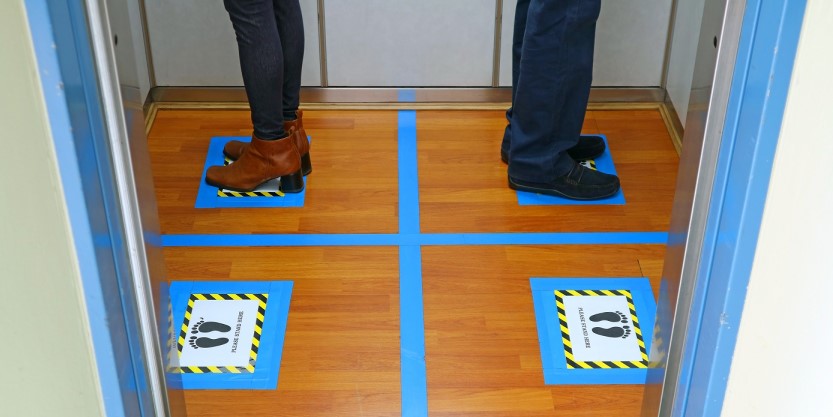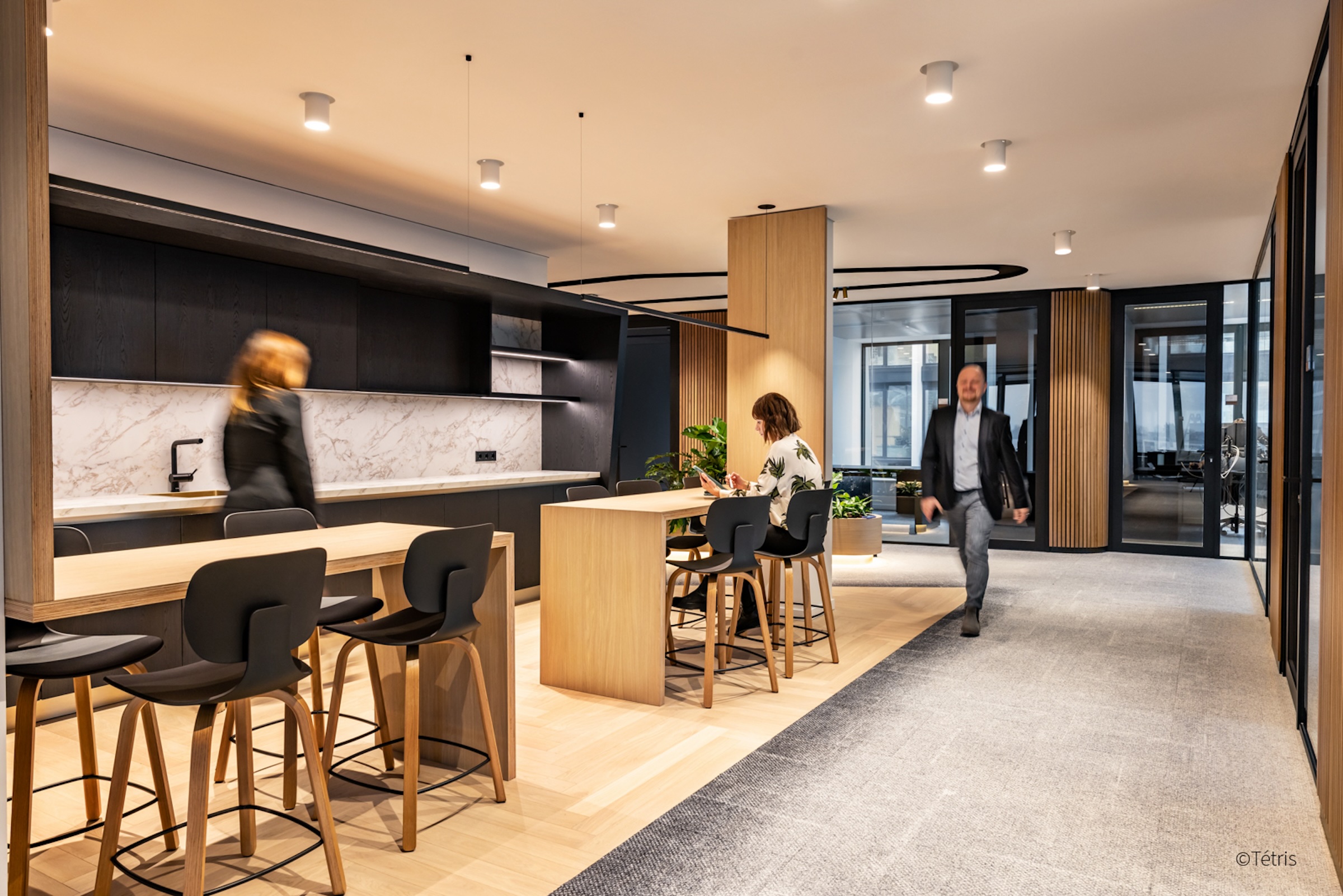The office environment that employees are returning to is very different to the one they left – and visual indicators are key to explaining the new set-up.
As employees return to the office, a new batch of signs and visual markers are helping to enforce physical distancing and hygiene practices to keep them safe.
From markings in kitchen areas to new procedures for using lifts, walls, floors and surfaces now feature a variety of instructions about how the post-pandemic office will work.
Yet there’s more to it than taping crosses onto tables that can’t be used and covering walls with laminated signs as employees adapt to a very different office environment than they’re used to.
“Creating the right mood and atmosphere is imperative,” says Lee Daniels, global product manager for workplace & occupancy strategy at JLL. “People have been confined for some time at home and returning to an office full of Do Not Enter or Please Wait Here signs could feel intimidating.
“Companies are looking to reassure their staff and make the re-entry experience as pleasant and smooth as possible – while also ensuring physical distancing guidelines are in place. The style and positioning of visual indicators is therefore a key consideration as part of their workplace re-entry plans.”
Sign of the times
While spacing out desks in line with physical distancing is straightforward, other areas of the workplace such as kitchens and breakout zones are more complex to reconfigure – and ensure people understand how to use these spaces on their return.
Clear signage is a must, but companies are also looking to a more creative use of furniture and greenery to section off areas and reinforce instructions.
Using room partitions made of plants instead of artificial walls is one way to “subtly communicate” distancing rules, says Nicasio Gutiérrez, managing director for EMEA at Tétris.
“It’s a much more positive and creative solution – and more fun than yet another bright blue sign,” he says. “We know the benefits for staff wellbeing that biophilia can offer when it’s placed around the office.”
The growth of flexible space also means there’s now more room on office floors to add in elements that enforce separation without making them feel claustrophobic.
Thinking long-term
In recent times, many companies have invested in designing a workplace that reflects their brand and helps employees to work at their best. It’s something that companies will not want to lose in the new normal for workplaces.
“Firms with an eye on the long-term value of their space aren’t keen on throwaway, short-term fixes such as lots of laminated signage,” Gutiérrez says. “Yet cost remains a big issue – and right now companies are dealing with the immediate needs and requirements for re-entry. It’s a wait-and-see game as to how permanent reconfiguration becomes – not to mention the willingness and ability of companies to invest.”
With companies facing implementing social distancing measure for the first time, their approaches to signage will adapt as more people come back to the office and employees become more familiar with the new set-up.
“There’ll inevitably be some fine-tuning required along the way,” Daniels says. “Equally, the mindsets of returning staff may quickly adapt, in line with the idea that it takes humans around a month and half to change their habits. If that’s the case, one would hope that signs are then less needed and new office habits, such as entering by a certain door, become the norm.
“Personal wellbeing will be a big motivating factor in behavioral change; look how quickly people have adapted to wearing masks.”
Localising communication
Even for multi-national companies, what works in one office may not work in another due to local cultural differences.
“Some countries respond better to rules than others, so despite some multinational companies being able to adopt and learn from the measures put in place by their local offices, there is no one-size-fits-all solution,” Gutiérrez says.
And while many people are now seeing photos of how workplaces have adapted, some companies are creating online welcome back information packs in the run-up to reopening – a step Daniels says is as important as any signage.
“Going back to the office after months away is a big step for some employees who may well be nervous about what happens next,” he explains. “Companies need to recognise that the new workplace isn’t just about strict hygiene but also ensuring that employees feel comfortable in the new environment.”

Discover our Tomorrow’s Workplace guide
find out how signage can help smooth your re-entry process and keep your employees safe.



